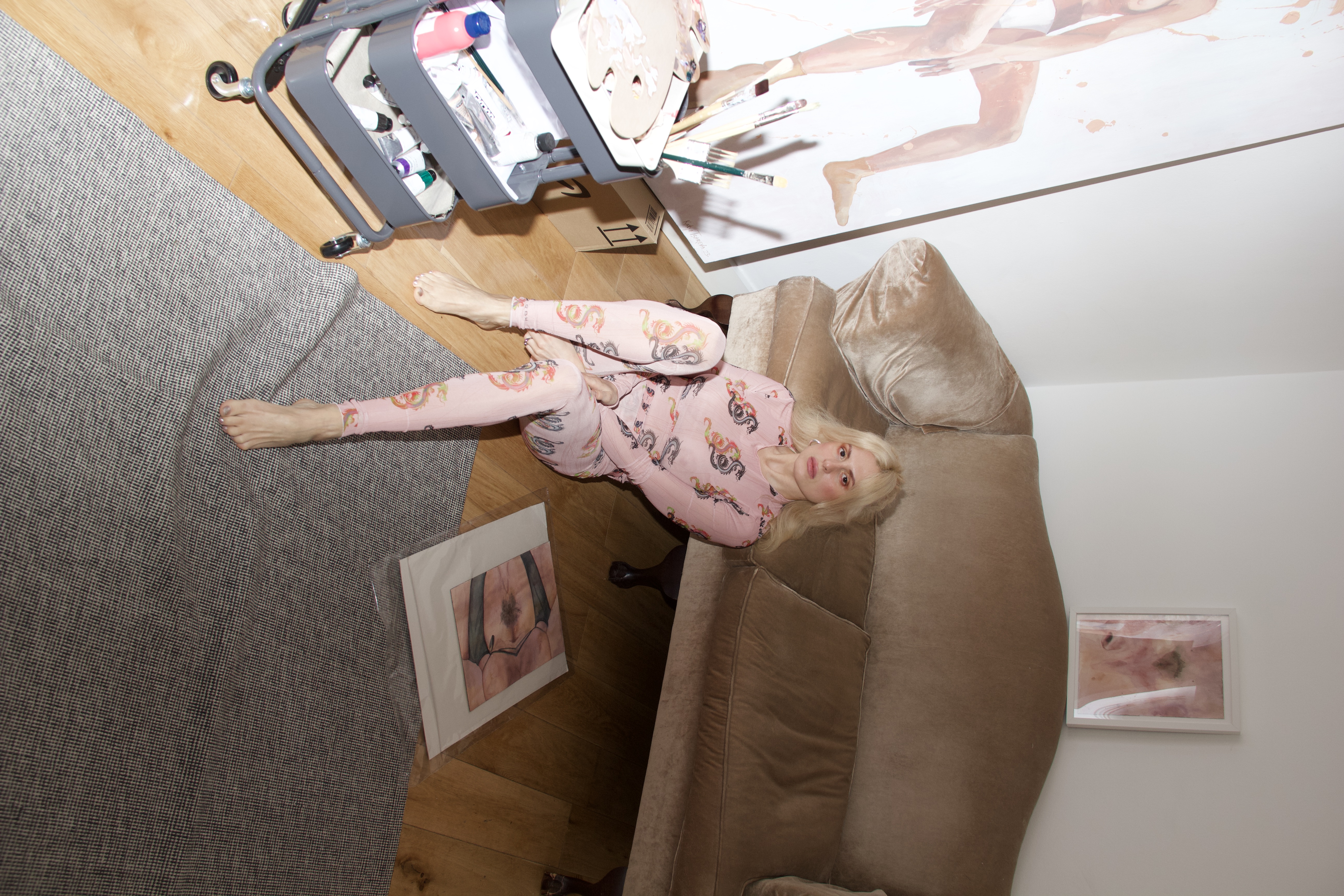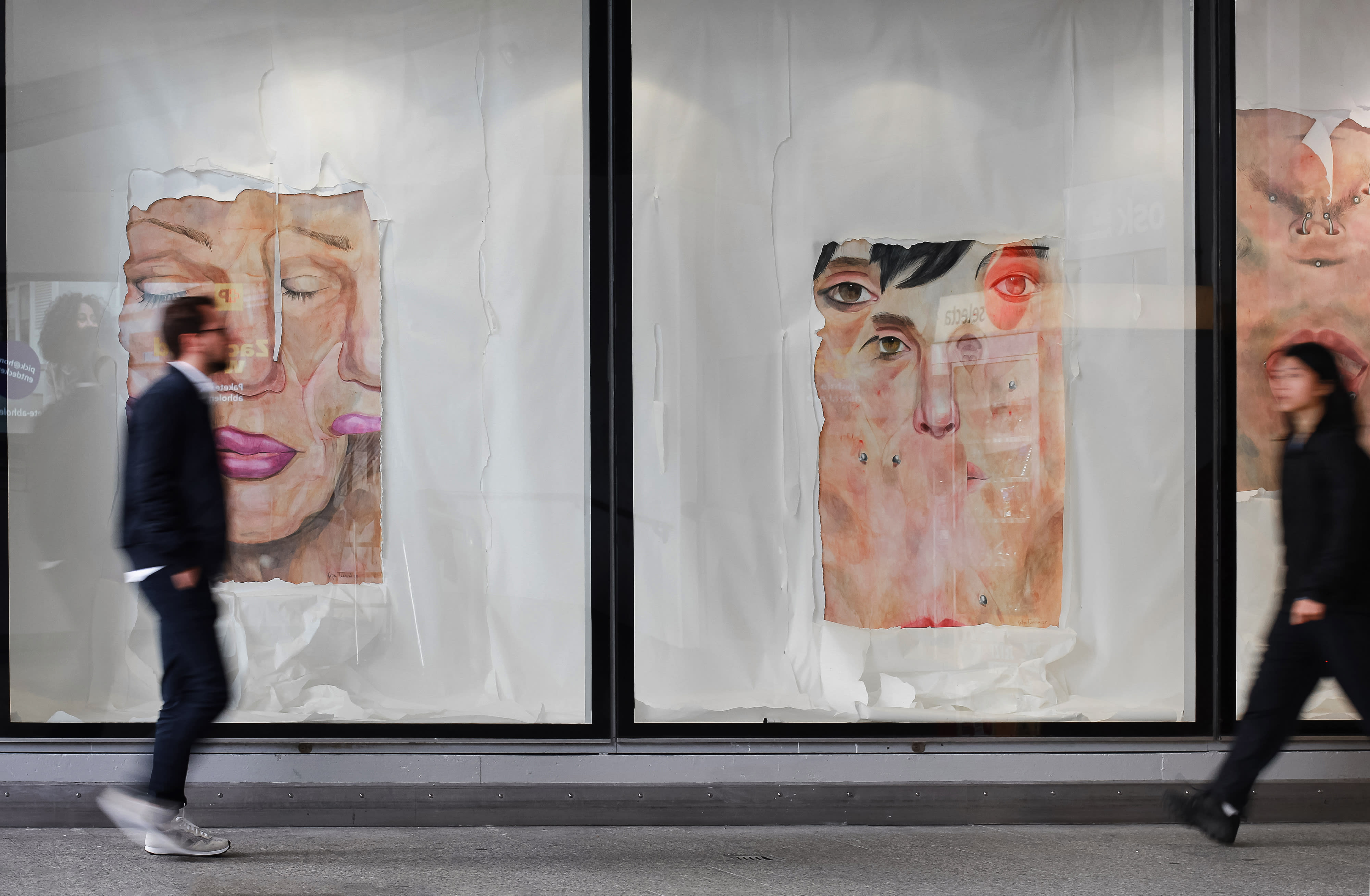
Your work often deals with physicality and identity. Do you have a personal experience that inspired this research?
I have been interested in the human figure since my early childhood. It's worth saying that animals. from an anatomical point of view, attracted me no less. When studying drawing and painting everything starts with simple forms and objects, the human figure is usually studied only in the last stages of study and usually arouses great interest in all students who are interested in the process of drawing and analyzing form. When I began my conscious art practice, my interest in the body remained strong but expanded into a more multidimensional approach, moving beyond mere dissection of form on canvas or paper. However, not all my works and projects stem from this interest—there have been phases when I avoided these themes altogether. Currently, I’m experiencing a renewed fascination with the body, and this time I am embracing it fully, focusing solely on the human figure in large, close-up formats.

How would you describe your artistic practice and what role does the transformation of the human form play in your works?
My artistic practice currently centers on exploring and understanding the human body and interpreting corporeality as an artist. I am also interested in issues of the manifestation of identity, how this affects the body and how it is expressed visually. I am not attached to people as a source of one private story, rather I am interested in what I find in this very moment when I look at a photograph or a person I know nothing about. We may have different facial expressions at different points in our lives and these different images are a certain way of presenting ourselves to others. Observing others can evoke conflicting feelings within us—sometimes attraction, other times rejection, even disgust. In my work, I attempt to express this tension and contradiction through transformations, heightening the realism of the images to amplify these feelings.
You work in watercolor, what is challenging about working with this medium?
Watercolor is a very difficult and delicate technique, especially when it comes to depicting the body in a realistic manner. In this technique the artist has almost no chance of making a mistake because watercolor is very difficult to correct, each previous layer will be visible in the subsequent one. On the one hand you need to be very focused and consistent in your actions, on the other hand you need to let the painting unfold naturally. This technique demands precision and deliberate decision-making while also requiring a sensitivity to the spontaneous processes that occur on the paper.
![]()
There is a sense of the precision of academic drawing in your work. What is the role of this precision in conveying an idea? Why is it important for you to keep it “realistic”?
In this series it became very important for me, in the past it was not so obvious. In it, I look for the unreal in the real and approximate the real as much as I can. I can't say that I strive for academicism, in general, the basis of my work is completely different, but the very principle of body building, based on an academic approach, allows me to “live” these images that I create in digital format and make the object of the image more real for myself. Constructing the form on the paper is the most effective way to achieve this. It’s also a challenge, and overcoming challenges—especially in watercolor—is always satisfying.
What challenges and opportunities does the digital age bring to artists? How do you interact with this technological context?
I think the digital age gives additional tools for the realization of certain artistic tasks. In fact, we have been living in this era for a long time and we use it in one way or another. I use the power of computer graphics to recycle photos and create references for my paintings. I recently tried AI to create people from scratch that I used as models for painting, a very interesting process. For my practice I constantly need people of different looks and, in general, AI solves this problem quite easily. I plan to continue exploring and using the new possibilities of the digital world, but in my case I see it as a supplement and auxiliary tools, I would not switch completely from physical to digital practice, rather, I am not that interested in it.

Lastly, you tend to avoid direct narratives in your work. Why is it important for you to retain multiple meanings in your images?
Probably because my approach to my work is often very intuitive. I don't feel like I'm telling one particular story and I don't set myself such a task. I search for images, process them, and arrange them in a way that invites reflection. I’m not aiming to send a definitive message or call to action through these images; rather, it’s an invitation for viewers to observe and reflect alongside me on the essence and complexity of human nature.
